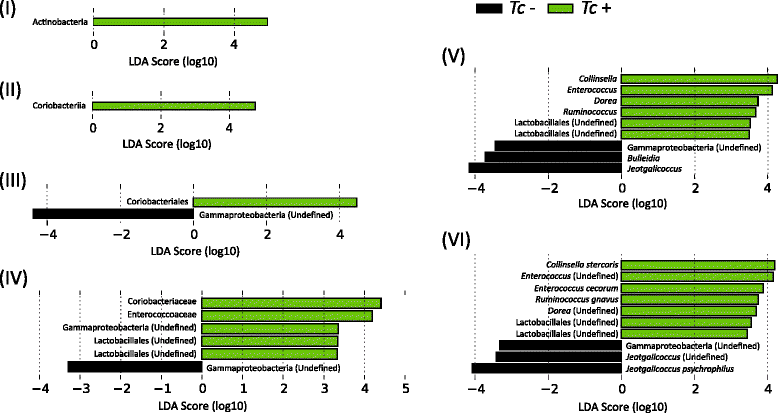Helminth infections and gut microbiota - a feline perspective
- PMID: 27912797
- PMCID: PMC5135779
- DOI: 10.1186/s13071-016-1908-4
Helminth infections and gut microbiota - a feline perspective
Abstract
Background: Investigations of the relationships between the gut microbiota and gastrointestinal parasitic nematodes are attracting growing interest by the scientific community, driven by the need to better understand the contribution of parasite-associated changes in the composition of the gut flora to both host malnutrition and immune modulation. These studies have however been carried out mainly in humans and experimental animals, while knowledge of the make-up of the gut commensal flora in presence or absence of infection by parasitic nematodes in domestic animals is limited. In this study, we investigate the qualitative and quantitative impact that infections by a widespread parasite of cats (i.e. Toxocara cati) exert on the gut microbiota of feline hosts.
Methods: The faecal microbiota of cats with patent infection by T. cati (= Tc+), as well as that of negative controls (= Tc-) was examined via high-throughput sequencing of the V3-V4 hypervariable region of the bacterial 16S rRNA gene, followed by bioinformatics and biostatistical analyses of sequence data.
Results: A total of 2,325,366 useable high-quality sequences were generated from the faecal samples analysed in this study and subjected to further bioinformatics analyses, which led to the identification of 128 OTUs and nine bacterial phyla, respectively. The phylum Firmicutes was predominant in all samples analysed (mean of 53.0%), followed by the phyla Proteobacteria (13.8%), Actinobacteria (13.7%) and Bacteroidetes (10.1%). Among others, bacteria of the order Lactobacillales, the family Enterococcaceae and genera Enterococcus and Dorea showed a trend towards increased abundance in Tc+ compared with Tc- samples, while no significant differences in OTU richness and diversity were recorded between Tc+ and Tc- samples (P = 0.485 and P = 0.581, respectively). However, Canonical Correlation and Redundancy Analyses were able to separate samples by infection status (P = 0.030 and P = 0.015, respectively), which suggests a correlation between the latter and the composition of the feline faecal microbiota.
Conclusions: In spite of the relatively small number of samples analysed, subtle differences in the composition of the gut microbiota of Tc+ vs Tc- cats could be identified, some of which in accordance with current data from humans and laboratory animal hosts. Nevertheless, the findings from this study contribute valuable knowledge to the yet little explored area of parasite-microbiota interactions in domestic animals.
Keywords: 16S rRNA; Cat; Gut microbiota; Lactobacilli; Microbial richness and diversity; Toxocara cati.
Figures



References
Publication types
MeSH terms
Substances
Supplementary concepts
Grants and funding
LinkOut - more resources
Full Text Sources
Other Literature Sources
Miscellaneous

